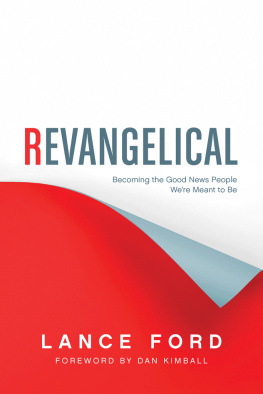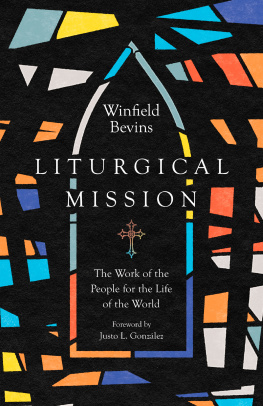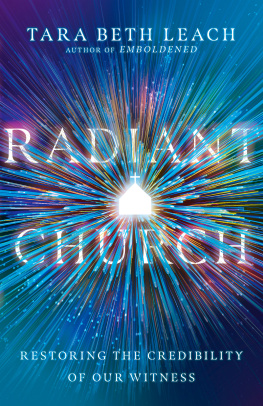Copyright 2008 Laura Ruth Yordy. All rights reserved. Except for brief quotations in critical publications or reviews, no part of this book may be reproduced in any manner without prior written permission from the publisher. Write: Permissions, Wipf and Stock Publishers, W. th Ave., Suite , Eugene, OR 7401 .
W. th Ave., Suite
Scripture quotations are from the New Revised Standard Version Bible, copyright by the Division of Christian Education of the National Council of the Churches of Christ in the USA and used by permission.
Yordy, Laura Ruth.
Green witness : ecology, ethics, and the kingdom of God / Laura Ruth Yordy.
viii + p.; cm. Includes bibliographic refrences (p. 17382 ).
ISBN : -- 55635 -- (alk. paper)
. Environmental ethics.. Human ecologyReligious aspectsChristianity.. EnvironmentalismReligious aspects. I. Title.
BT. Y 2008
Manufactured in the U.S.A.
Preface
W hen I was a bookish twelve-year-old (rather than a bookish middle-aged creature), my family moved to four acres of woods in Virginia. The new locale was not a rural area, but the acres of thick forest were a radical change from the tidy suburban development I had been accustomed to. I spent hours wandering the woods, exploring the creeks, trying to climb trees and walk on slippery logs. I learned to feel comfortable there, enjoying the seclusion (I thoughtnow I suspect my parents could always see me from the house) and the birdsongs. One afternoon, noticing a small hole in the streambank, I knelt and put my eye close to the mud to look inside. What I saw, to my great astonishment, was another eye, looking out at me. I was flabbergasted, and stood up so fast that I fell back into the water. (I dont know if seeing me had as strong an effect on the snakeprobably not.) Without the words to describe it, I was faced (literally) with the realization that mine was not the only subjectivity in the woods. I was as much explored and observed as I was explorer and observer. The universe is not solely an object for humans to study, but a grand multiplicity of subjects, each perceiving and constructing its own understanding of the world.
Decades later, this experienceand my love of animals, plants, and wildernesscame into play as I discovered Christianitys rich visions of the relationship between Creator and creatures. But these visions did not seem visible to most church communities. For several years, I believed that education was the answer; that if faithful people were simply informed of Gods love of and plan for the entire creation, they would amend their destructive practices. Local and diocesan committees sent hundreds of informational packets to parish priests, encouraging them to initiate earth-friendly study groups, sermons, and ministries. Over time it became clear that more information did not lead to transformation. To paraphrase Paul, human sin is rarely susceptible to cognitive cures.
As I studied further, it seemed that treating Christian-earth relationships in terms of discipleship or virtue might generate results that were both more productive and more faithful than either secular environmentalism or Christian education could produce. The result of this thinking became (in geologic time) a PhD dissertation and, eventually, this book.
I must acknowledge the religion faculty at Duke University for their model of outstanding scholarship and personal involvement in theological work, especially my advisor, Stanley Hauerwas. Stanleys responses to my efforts were usually encouraging, sometimes maddening, and often indecipherable, but he always, always made me think. This book would also never have come into being without the continued fellowship and guidance of Rev. Dr. N. Brooks Graebner and the people of St. Matthews Episcopal Church, Hillsborough, North Carolina. They set a high standard for serious, good-spirited wrestling with issues of faith and ethics. Finally, my family deserves deep gratitude for supporting my years of work, even when they would have rather been doing something else.
Chapter 1
The Churches Response to the Environmental Crisis
L et us begin with an image, an eschatalogical vision. Imagine driving to an unfamiliar church on Sunday morning, a church you have heard is worth visiting. When you are a few blocks away, you begin to notice a number of people walking and bicycling in the same direction you are headed. They look not like athletes or fitness buffs, but like families on their way somewhere. Turning onto the churchs street, you begin to hear the church bells, and see the bikers and pedestrians increase their pace. Finally you see the sign for the church, but you cannot actually see the buildingjust trees and bushes and a very small gravel parking lot. A church bus pulls into the lot behind you, and you grin at its Biodiesel for Jesus bumper sticker.
The passengers get off the bus, greet you warmly, and lead you along a path from the parking lot to the building. Along the way they explain that the large garden you are crossing grows organic fruit, vegetables, and flowers for local soup kitchens and church altars. Members of the church, as well as the local neighborhood, tend the garden and compost bins. They tried, they tell you laughingly, to produce their own communion wine, but all they managed to make was purple vinegar! So they buy their organic wine and communion wafers from elsewhere. The garden, however, serves as a project in which the whole community can participate, and it makes good use of land that had formerly been a parking lot. As your guide says, We take literally the phrase taste of the kingdom!
Finally you emerge from the rows of corn and sunflowers. The church stands before you, constructed of a combination of local stone, recycled wood siding, and other green materials. It looks much like any other church, although the roof is nearly covered with solar panels. Inside, the sanctuary and meeting rooms glow with natural light, and you feel the movement of air from fans and open windows. The sanctuary is arranged in a contemporary style with the altar placed so that the minister or priest faces the people during the service. Behind the altar and cross, a huge glass window looks out onto what appears to be a park or meditation gardentrees, shrubs, birdhouses, and a fountain. It is a rich visual scene and it is very different from churches where no hint of the natural world is permitted to enter.
The service itself strongly resembles that of your home church, although it includes prayers for the local river (site of a recent toxic spill) and for endangered animal and plant species. The preacher focuses on hope, and the privilege and responsibility of Christians to bear witness to the eschatonthe fulfillment of Gods promises for creationas envisioned in Isaiahs and Jesus analogies of the Kingdom. After the service, an older man offers to show you around and tell you about the churchs various ministries. These run the gamut from missionary efforts to racial reconciliation to assisting a congregation in post-Katrina New Orleans, but several focus on ecological or eco-justice concerns. The church buildings are extremely energy efficient, using combinations of geothermal and solar energy. Each household is invited to make an eco-justice covenant, in which it commits to responsible consumption, patronizing fair-trade businesses, and reducing its ecological footprint. In some ways this church seems idealistic or even nave about its ministry goals. When you try to ask your guide about this, he laughs. I suppose we might seem nave to a visitor, with our grand schemes to reduce carbon output, clean up the river and provide healthy food for homeless folks. But we dont think we can fix the world. We just like to show the possibilities of what Christ can doand Christ never worried about practicality, did he? In fact, he continues, what weve found is that improving the way we live on the land is a process. We take a step that seems big, then we find it wasnt so hard after all. So we take another step. Pretty soon, the church is engaged in what some might regard as radical environmentalism. Yet, most of us dont think of ourselves as environmentalists, really. Were just Christians, trying to be faithful as best we can.






